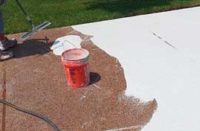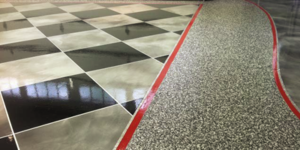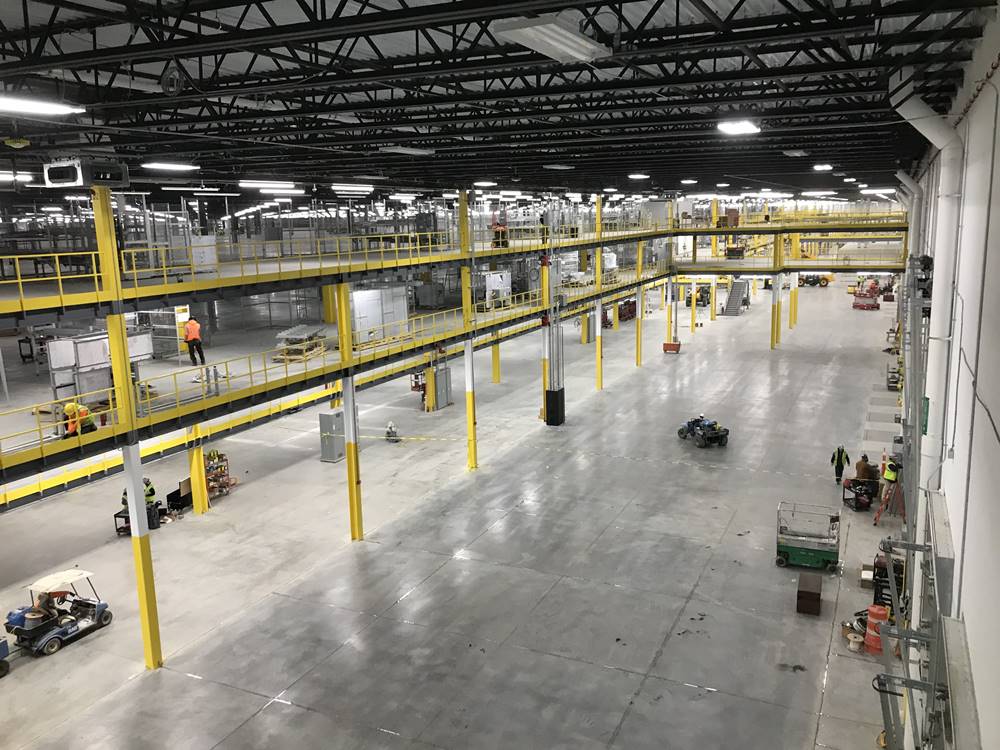
Photos courtesy of Euclid Chemical Co.
When properly installed, concrete is one of the most durable and long-lasting products construction pros can use. When used as finished flooring, concrete should have control joints saw cut into its surface shortly after placement.
Control joints can be thought of as deliberate cracks cut into concrete floors. They allow for movement caused by temperature and moisture changes. They also direct the location of inevitable cracks that form because of drying shrinkage.
Control joints should be filled if floors are subject to heavy, hard-wheeled traffic commonly used in warehouses and distribution centers. If left unfilled, edges of control joints will be damaged by the impact of this traffic. The joints can also become areas for dirt, debris and moisture to collect — causing additional problems.
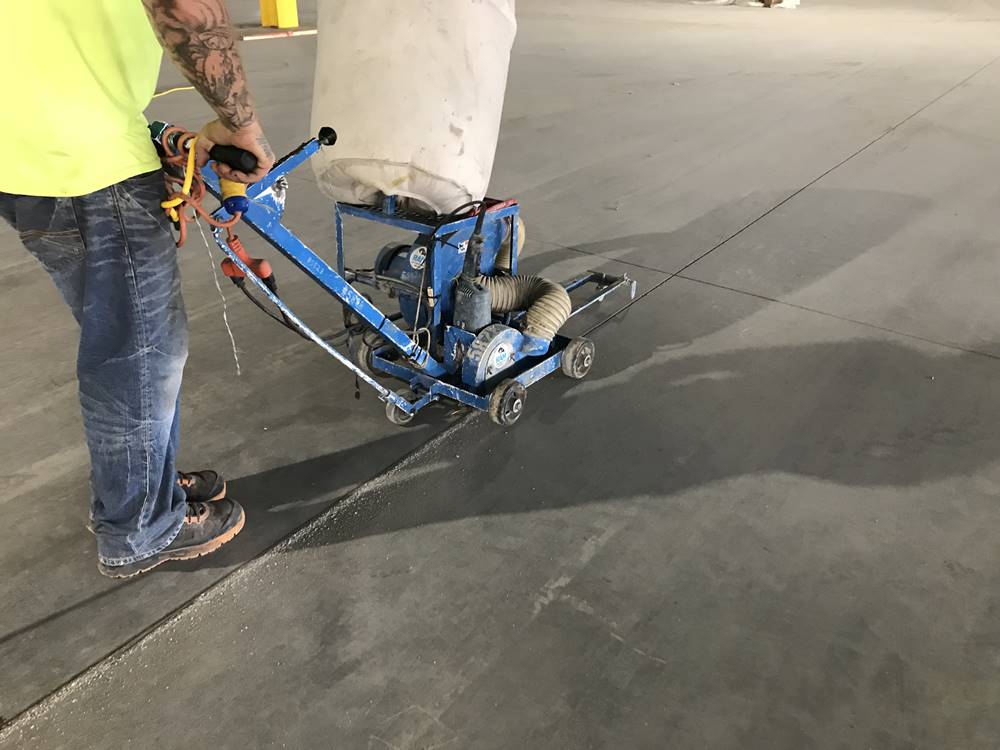
Epoxy and polyurea-based joint fillers are two of the most popular filler solutions. They help extend the lifetime of concrete floors and allow them to perform as intended throughout their usable years. Still, selecting a joint filler can be challenging. This is due to various factors, including different chemical compositions and physical properties.
We’ve compared epoxy and polyurea joint-filler characteristics to help provide guidance when selecting the right filler for your project:
Shore durometer (hardness scale)
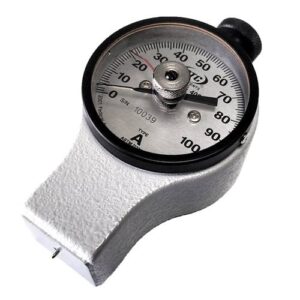
A shore durometer measures the hardness of a material, usually rubber, plastics, silicone and other polymers and elastomers. The A and D scales are the ones most used in reference to joint fillers.
The Shore A scale measures the softer, rubber materials, while the Shore D scale measures harder plastics. The higher the measurement on the scale, the harder the material. Both shore values are sometimes published for joint fillers because engineers and specifiers often require one or both scales.
According to industry standards for concrete floor and slab construction, a concrete floor joint filler is required to have a minimum Shore A hardness of 80. Both epoxy joint fillers and polyurea joint fillers meet this requirement, as they offer the desired 80-85 durometer measurement. In this case, both options have an equal advantage.
ADVANTAGE: Equal
Elongation
A material’s ultimate tensile elongation is the percentage increase in length that occurs before the material breaks under tension. Don’t be misled by a joint filler’s high percentage of elongation or expansion value. Joints widen with slab shrinkage, but they don’t expand along their length. Since joint fillers can’t expand with joints as they widen, the only alternative is for fillers to separate or split.
Polyurea joint fillers with a Shore A measurement of 80 may have a tensile elongation of 400%. However, they can expand only about 5% to 15% laterally before splitting or losing adhesion along the concrete bond line.
Epoxy joint fillers with an 80 Shore A measurement with 25% elongation will usually tolerate 5% to 8% lateral expansion. In this case, high-elongation polyurea joint fillers offer very little in expansion advantage over an epoxy. Subsequently, both have an equal advantage.
ADVANTAGE: Equal
Adhesion to concrete
Maintaining adequate adhesion under normal service conditions and movement is one of the fundamental requirements of control joint fillers. Joint fillers that separate or fail to adhere create gaps. These can cause dirt, debris and moisture to collect and cause problems.
Both epoxies and polyureas adequately adhere to concrete.
ADVANTAGE: Equal
Application temperature
Freezing temperatures will prevent epoxies from completely curing. Only use epoxies when the installation temperature is above 32 degrees F (0 degrees C).
Polyureas, on the other hand, will thoroughly cure even in freezing temperatures. Polyureas can cure at temperatures as low as -20 degrees F (-29 degrees C). This gives them the advantage over epoxies.
ADVANTAGE: Polyurea
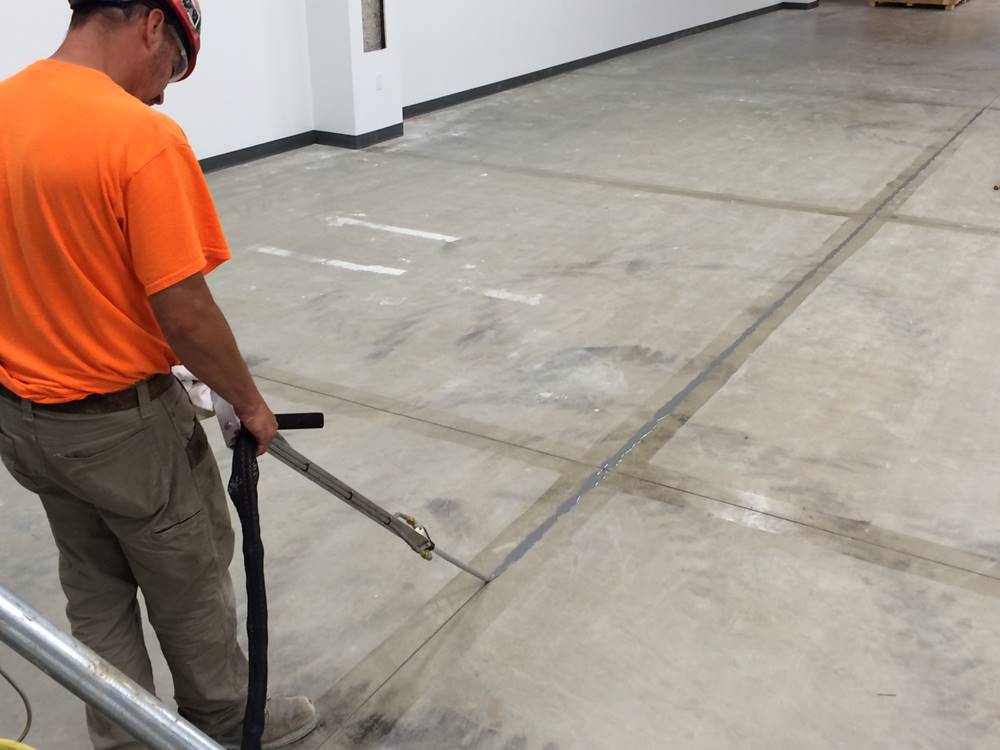
Installation and cure
Meter-mix pump equipment can dispense both epoxies and polyureas. Manual bulk guns can also dispense epoxies.
In general, polyureas can’t be dispensed with manual bulk guns because their pot life is only a few seconds. However, the short polyurea pot life, coupled with the efficiency of a meter-mix pump application, leads to faster turn-around time. It also reduces labor and generates higher cost savings. In this case, polyurea is the preferred option.
ADVANTAGE: Polyurea
Appearance
When exposed to UV radiation from sunlight or even some types of interior lighting, both filler types will discolor. Many interior lighting systems — especially energy-efficient and/or high-output bulbs — can cause joint fillers to turn greenish or yellowish.
Polyureas and epoxies may be affected, as both have poor UV stability. However, polyurea joint fillers are more color stable and resistant to discoloration from UV than epoxy joint fillers.
ADVANTAGE: Polyurea
Separation
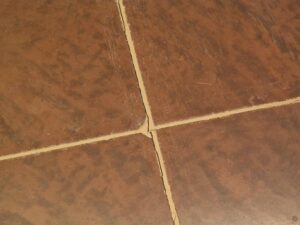
All joint fillers separate, either adhesively or cohesively, as joints open due to slab shrinkage. Separation is exaggerated when fillers are installed soon after placement, before the majority of slab shrinkage has taken place. To reduce joint filler separation, delay filling as long as possible.
Polyureas and epoxies separate differently. When epoxy-filled joints expand and the concrete shrinks, epoxies tend to separate in a leap-frog manner. As a result, the remaining bond jumps from side to side.
Most polyureas tend to separate continually along only one side. The separation manner of polyurea is less noticeable, but it doesn’t affect its performance.
Consequently, the advantages of both fillers are equal.
ADVANTAGE: Equal
Removal
If a joint filler is improperly installed (i.e., filled less than full depth, has concave profile) or if it must be removed for other reasons, epoxies are easily removed by saw-cutting. Most polyureas, on the other hand, are not easily removed. They typically shred upon contact with a sawblade.
ADVANTAGE: Epoxy
In conclusion
While polyureas have grown in popularity over the last 20 years, epoxy fillers have been in use for much longer. They remain popular today. To determine which joint filler is best for your project, consider the intended use of the concrete floor. In addition to the fillers’ characteristics, also consider the application environment.

